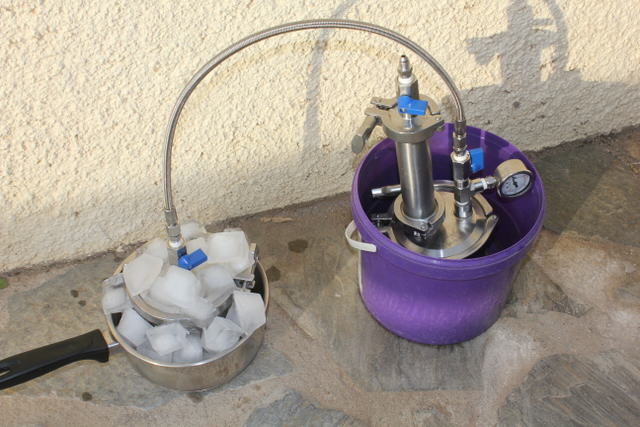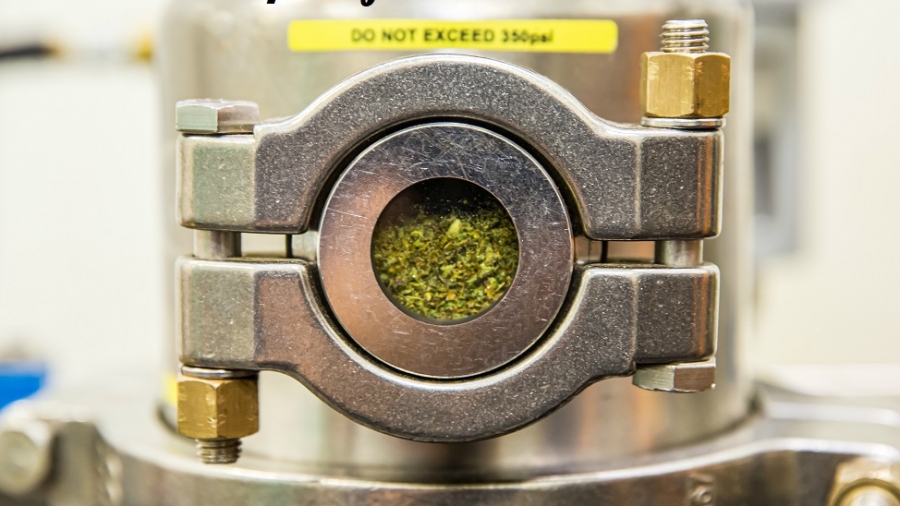A closed-loop system is a term used to describe the equipment that allows processors to extract the active compounds from the cannabis plant using a variety of solvents in a safe, efficient environment. It is referred to as closed-loop because the solvent being used to extract the compounds from the plant matter does not come into contact with the external environment at any point during the extraction process. Also, the solvent makes a full loop on its phase change from liquid to gas and back to liquid again — the solvent starting and finishing in the same space.
Closed-loop system
A cannabis extraction system that uses solvents such as butane or propane to remove oils from cannabis plant material inside a closed system, not open to the outside environment. A closed-loop system can collect solvent used and run it through cannabis material multiple times, allowing for the efficient extraction of specific cannabinoids and terpenes.
“Closed-loop systems are safer, more efficient, more cost effective, and create higher quality products than open systems.”
What is a closed-loop system?
Closed-loop systems are the norm in solvent cannabis extraction today. Open blasting is a system used in the past that is open to the environment and can lead to explosion and harm; open blasting is a dangerous, outdated technique, and it is not recommended to use. Closed-loop systems are much safer and states in the legal cannabis market require they be used to produce cannabis concentrates.
Cannabis plant material is put in a closed-loop system with a solvent, such as butane or propane. The solvent strips off the oils of the plant material and produces an extract, which will be further refined to turn into a concentrate.
Closed-loop systems have been used for decades to create perfume and food additives and have recently been adapted for use with cannabis. A closed-loop system offers a safe way to work with flammable hydrocarbons like butane and propane, and it also offers an easy way to use blends of butane, propane, and other chemicals for different extractions.
Closed-loop systems tend to be expensive to set up but will save money over time, as they have low operating costs and solvents can be reused.
How does a closed-loop system work?
Closed-loop systems vary mechanically, depending on the solvent that will be used. However, the general method remains the same. There are three main containment areas: a vessel that contains the primary solvent, one for the cannabis plant material, and one that is used to collect the resulting extract.
Depending on the type of solvent being used, e.g. butane or carbon dioxide (CO2), the solvent may need to pass through the cannabis plant matter multiple times in order to strip off all the precious compounds, such as the cannabinoids and terpenes. For instance, butane is one of the most effective solvents and is capable of extracting almost all of the essential properties in one loop through the system. On the other hand, CO2 is a much more selective solvent and will take several more runs, and several more hours, to fully capture all the intoxicating and therapeutic properties of the cannabis plant.
The process begins with a tank of liquid solvent or a gas that is mechanically converted into a liquid solvent. The next step is to allow the liquid solvent to flow into the tank with the cannabis buds or trim. At this point, the solvent will dissolve the active compounds in the plant and create a solution. The final tank is where the resulting extract goes and where the initial solvent used is evaporated from the solution through the use of heat. When the solvent evaporates into a gas, it rises and is condensed back into the first tank. The solvent can then be reused, either on the same cannabis or for a fresh batch.
What are the risks?
Each solvent has its own hazards and precautions are taken according to the solvent being used. Some solvents are flammable, while some are asphyxiants. Some operate at low pressure, others operate at high pressures. Each solvent is different and requires different engineering controls to ensure that all hazards are mitigated during the extraction process.
Though it gained a bad reputation in the media for explosions that happened during “open blasting” — where the solvent is exposed to air during the extraction process — butane has a “Generally Regarded As Safe” GRAS rating by the FDA, meaning it is Its flammability, however, makes using a closed-loop system the only available method of butane extraction, as open blasting has proven to be a dangerous alternative.
CO2, while not flammable, is an asphyxiant that requires an extremely high amount of pressure to convert it from a gas into a supercritical fluid form that is capable of extracting the compounds from cannabis. The engineering controls used in these systems monitor the relative CO2 concentration in the air in order to ensure that workers are safe throughout the entire process. Safety measures are taken no matter the solvent, with sensors in place to detect even trace amounts of gas.
Definition – What does Closed-Loop Extraction System mean?
A closed-loop system is an extraction method used to create cannabis concentrates. During the process, no solvents are exposed to the open air but are contained within a closed loop system.
The closed-loop extraction system has been used for decades to produce perfume, food additives, and beauty products. Only recently has the method been utilized in creating cannabis oil. It is far safer than open blasting. Utilizing the system is a safer way to work with flammable solvents. The extraction machinery has no openings, so it successfully contains the solvents in a safe and contained environment.
MaximumYield explains Closed-Loop Extraction System

With a closed-loop system, extraction artists can reuse solvents and reduce the risk of explosions.
A closed-loop extraction system is a professional set-up that involves maintaining pressure at all times and operating control valves. It is comprised of a large tank that holds the solvent, an attached tube for controlled and contained blasting, a recovery tank, a refrigerant pump, a recovery pump, and a refrigerant scale that effectively measures the weight of the recovery tank.
To use butane as a solvent, the set-up must also have an oven and a pump. The closed-loop system operates by placing ground up marijuana plant material into the extraction tube. A pressurized solvent tank is attached to the extraction tube. During the entire process, the solvent will remain under pressure. It is controlled with clamps and valves.
The solvent passes through the plant material and the plant’s trichomes are stripped to be deposited into the basin. The used solvent are collected into a recovery tank for later use.

Nice system, nice read. Thanks. Just a heads up on the molecular sieve it should run through as a liquid and not a vapor. There designed to take moisture from liquid state. Peace!